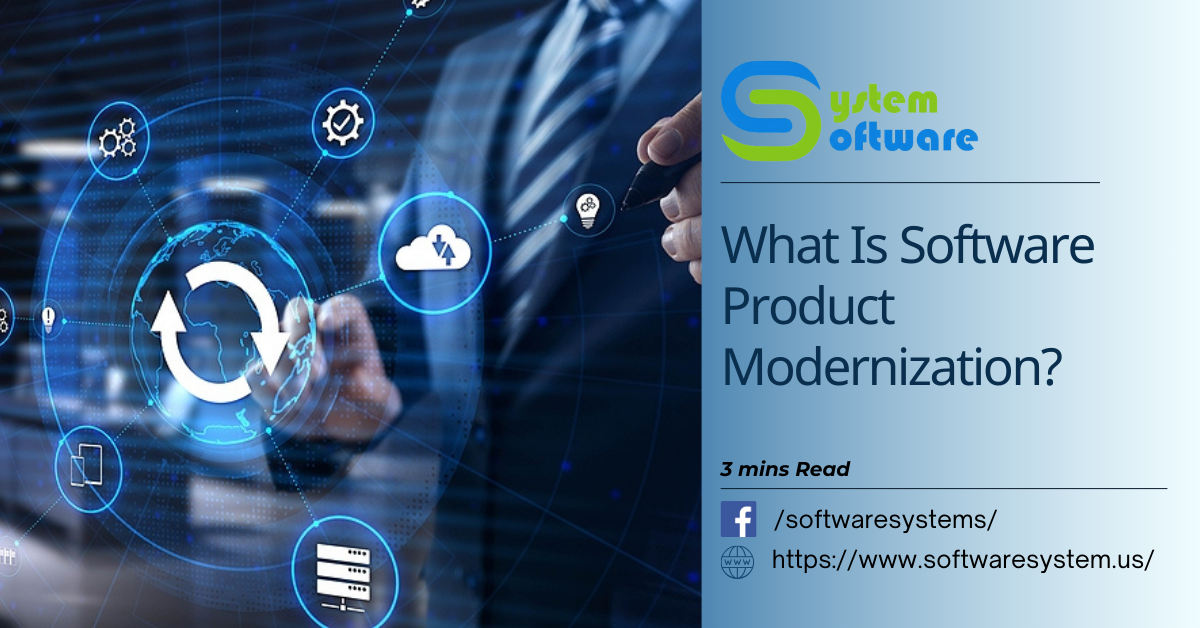Software product modernization is the process of transforming outdated applications to align with modern technologies, frameworks, and programming standards. This ensures the software remains competitive, delivers enhanced functionality, and meets customers’ evolving expectations.
A notable example is Netflix, which successfully modernized its systems by adopting microservices. This shift not only improved its performance and scalability but also enabled faster feature deployment, keeping the company ahead in the streaming market. In this guide at Software Systems, a Technology services company, we will look at Methods, Processes, and strategies of Software product modernization.
Table of Contents

Methods for Software Product Modernization
Modernizing software is essential for staying competitive and meeting customer needs. Below are proven approaches to upgrade and revitalize your software product:
1. Refactoring
Refactoring involves restructuring the existing code without altering its functionality. By simplifying and organizing the codebase, the software becomes easier to maintain and less prone to errors.
2. Re-Architecting
Re-architecting focuses on overhauling the software’s structural design. This could involve transitioning to cloud-based infrastructure, adopting microservices, or integrating advanced technologies for improved scalability and performance.
3. UI Modernization
UI modernization enhances the user interface by applying contemporary design principles, simplifying navigation, and introducing intuitive features. A modern UI boosts user engagement and satisfaction.
4. Implementing DevOps Practices
Integrating DevOps practices streamlines the development and deployment process. Automated pipelines, continuous testing, and agile workflows help deliver updates faster while maintaining quality and reliability.
Software Product Modernization Process
Modernization becomes necessary when an application reaches a point where it cannot evolve further due to technological limitations or outdated programming languages. Below is a step-by-step guide to effective software modernization:
Step 1: Architecture Audit
Begin by assessing the current system architecture. Identify weaknesses and define a roadmap for creating a more robust and scalable foundation.
Step 2: Code Audit
Evaluate the codebase for inefficiencies and outdated practices. Clean up the code through refactoring to enhance readability and performance.
Step 3: UX Audit
Review the software’s user experience. Pinpoint pain points and areas for improvement to ensure the product is intuitive and user-friendly.
Step 4: Define a Product Strategy
Based on the audits, establish clear goals for the modernization project. Identify your target audience, set priorities, and create a roadmap to achieve your objectives.
Step 5: UX Design Updates
Develop a high-fidelity prototype to refine the user interface. Gather feedback from stakeholders and users to iteratively improve the design before finalizing it.
Step 6: Refactor the Codebase
Improve the existing code by removing redundancies, enhancing structure, and adding necessary updates. This ensures a maintainable and efficient codebase.
Step 7: Performance Testing
Run extensive performance tests to identify bottlenecks. Optimize the system to handle various scenarios without compromising speed or reliability.
Step 8: Quality Assurance
Conduct thorough testing to identify and resolve bugs. This step ensures the software operates smoothly and meets quality standards before deployment.
Step 9: Develop a Roadmap for Continuous Updates
Establish a plan for ongoing enhancements, including feature updates and bug fixes, to keep the software relevant and competitive.
Strategies for Effective Software Modernization
Success in software product modernization relies on a clear strategy. Here are actionable steps to ensure a smooth transition:
1. Understand Customer Needs
Use market research and customer feedback to identify improvement areas. Prioritize updates that directly address user pain points and align with market demand.
2. Transition to the Cloud
Migrating software to the cloud increases scalability, accessibility, and cost efficiency. Cloud-based solutions enable faster updates and facilitate seamless data management.
3. Integrate Compatible Tools
Enhance your software’s capabilities by integrating it with other tools or platforms. This provides a unified and efficient user experience while streamlining operations.
4. Regular Updates and Maintenance
Keep your software up-to-date with regular feature additions and bug fixes. Proactively respond to user feedback to ensure continuous improvement.
5. Prioritize User Experience
Focus on creating an intuitive and enjoyable user interface. Eliminate usability hurdles and refine the software based on feedback to maximize user satisfaction.
Why Modernize Your Software Product?
Modernizing software ensures it remains competitive in a rapidly changing technological landscape. It improves performance, enhances user experiences, and future-proofs your business by adapting to evolving industry trends. Investing in software product modernization is not just an upgrade it’s a strategic move to drive growth and innovation.

